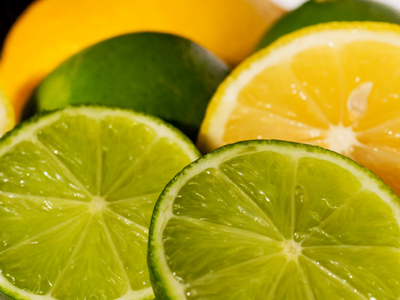Have you ever wondered why some things taste really sour? It all has to do with the acid levels within the foods and the degree of their neutralizing bases.
The word acid is derived from the Latin word acere which means “sour.” Acid itself is a corrosive metal. However, in foods when mixed with various bases, its harmful effects are diminished even eliminated and leave only a sour flavor. To test to see if a food compound contains acids, a piece of litmus paper is used by dipping the litmus into compounds. If the litmus paper then turns red, the compound contains acids.
Bases in foods can appear to feel slippery. They help to reduce the amount of acids found in foods. When testing for bases, the litmus paper will turn blue.
In the 17th century an Irish chemist by the name of Robert Boyle was the first to label substances as being either acids or bases. He actually referred to bases as alkalies.
In the late 1800s, Svante Arrhenius, a Swedish scientist, believed that water could dissolve acid compounds. By adding water, individual ions would separate, thereby weakening the corrosive ability of the acid. Ions are either an atom or a molecule that has acquired an electrical charge. They acquire this charge by either losing or gaining electrons.
Arrhenius believed that the acid compounds contained hydrogen such as hydrochloric acid, or HCl. In addition, he believed that bases when dissolved in water released hydroxide ions (OH-), or a negative charge. An example of a base would be sodium hydroxide (NaOH) – also known as table salt. Finally, Arrhenius was able to determine that all acids release H+ (a positive charge hydrogen ion) into solutions and all bases release OH-. The concept then that bases can make acids weaker is known as neutralization.
How does neutralization work? As acids release H+ and bases release OH-, when the two are mixed together you will get H2O which is simply plain water. The mixture of the two will always produce water along with a salt (NaCl).
In 1909 Sören Sörensen, a Danish biochemist, developed a way to test the degree of acidity. This test was based on a scaling known as the pH scale. The pH scale ranges from 0 to 14. Substances that test between 0 and just below 7 are acids while substances that test just above 7 and up to 14 are bases. Substances that test right at 7 are referred to as neutral substances.
Examples of Substances and Their pH Levels:
Stomach acid has a pH level of 1
Lemon juice has a pH level of 2
Soda has a pH level of 4
Rainwater has a pH level of 5
Milk has a pH level of 6
Pure drinking water has a pH level of 7
Egg whites have a pH level of 8
Baking soda has a pH level of 9
Tums® antacid has a pH level of 10
Drano has a pH level of 13
Sodium Hydroxide (NaOH) has a pH level of 14
Finally, in 1923 two different scientists (Johannes Brønsted who was Danish and Thomas Lowry who was English) broadened the theories introduced by Arrhenius as to acids and bases. They believed that any substance that had a hydrogen ion (H+) was an acid. These acid substances (i.e., substances that donated a positive hydrogen ion) were often referred to as proton donors. This was derived at because when electrons are removed from hydrogen, the end product is a proton.
According to Brønsted and Lowry, both acids and bases are related to the amount of concentration of hydrogen ions. Acids increase the concentration of hydrogen ions while bases decrease the concentration of hydrogen ions.
So, the next time you try something that tastes sour, you will know that the degree of sourness is directly related to the degree of acid found in the food.
Now that you have learned a little bit about food acids and bases, let’s see how many of the following ten questions you can answer correctly.








